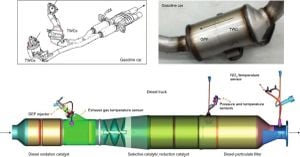India's textile industry is poised for improvement as the overall export outlook for fiscal year 2026 (FY26) remains positive, primarily driven by demand growth from key importing nations.
According to India Ratings and Research (Ind-Ra), year-on-year improvement in textile export volumes is expected as early as the third quarter of the current fiscal year 2025 (FY25). This growth is predominantly fueled by the ‘China-Plus-One’ sourcing strategy adopted by many importers, seeking to diversify their supplier base amid geopolitical issues, particularly concerning Bangladeshi exporters.
Ind-Ra noted, "With the likely improving year-on-year import volumes globally, India's market share...given the China-Plus-One sourcing strategy being adopted by most importers..."
This new sourcing strategy stems from several geopolitical factors, including political instability and increasing tariffs imposed by the U.S. on exports from other countries, positioning India favorably within the global market. The organization emphasizes the need for adequate infrastructure and government support to fully leverage these prospects.
According to Ind-Ra, the Indian government is expected to implement enhanced support measures to boost investments, particularly aiming for improvements in textile manufacturing capabilities. An integral part of this strategy involves fostering investments to improve downstream capacities. Ind-Ra stated, "Integrated downstream players are...better placed than upstream players..." to attract incremental orders. This differentiation is pivotal as industry players strive to secure competitive advantages within the global market.
Despite challenges, the domestic demand for Indian textiles and apparel is anticipated to sustain year-on-year growth between 9 to 10 percent, bolstered by continued increases in private final consumption expenditure, estimated at around 7 percent. This growth reflects the overall economic resilience and demand for textile goods within India.
On the pricing front, cotton remains stable, and the government is actively procuring large quantities to support market prices against potential fluctuations. Recent trends show effective stability at current levels amid predictions of cotton deficits due to lower production figures. With the Cotton Corporation of India’s intervention, the industry aims to maintain price stability, which is central for maintaining competitiveness within export markets.
Looking forward, Ind-Ra projects improved margins for players in the textile sector due to anticipated rises in export demand starting from the year FY25 onwards. The steady raw material prices are expected to create favorable conditions for players focusing on profitability and capacity utilization. This situation hints at potential EBITDA margin improvements for many companies. Market analysts predict, "EBITDA margins could improve year-on-year...supported by likely stable raw material prices.”
While these forecasts reveal positive trends, Sanjay K. Jain, chairman of the National Expert Committee on Textiles from the Indian Chamber of Commerce, expressed some reservations. Jain stated, “There is no textile inflation for the last two years, and there are no visible signs of a 10 percent growth within the domestic market.” This comment adds a layer of skepticism amid the projected growth statistics, signaling the need for cautious optimism among stakeholders within the industry.
Overall, the outlook for India's textile sector involves both challenges and opportunities. The increasing demand from global markets, aided by geopolitical factors favoring Indian exports, stands as the principal driver for future growth. Government support aimed at enhancing infrastructure and investment will be pivotal as the industry moves to capitalize on this potential. For stakeholders engaged within the textile export spectrum, the coming year brings renewed expectations but also necessitates strategic planning to navigate the challenges lying ahead.



